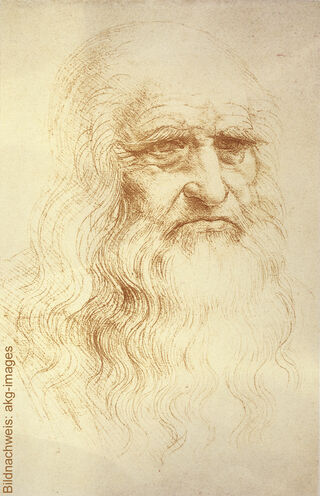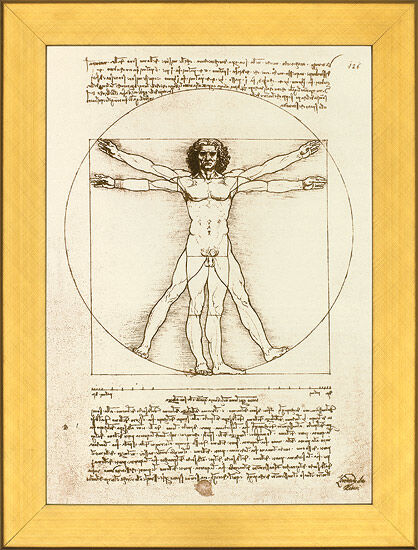Picture "Proportion Scheme of the Human Figure according to Vitruvius", framed


Picture "Proportion Scheme of the Human Figure according to Vitruvius", framed
Quick info
facsimile print on handmade paper | framed | glazed | size 71 x 54 cm (h/w)
Detailed description
Picture "Proportion Scheme of the Human Figure according to Vitruvius", framed
The Roman architect, engineer and writer Vitruvius (c. 70-10 BC) described the theory of the human figure as being the principal source of proportion in his treatise homo bene figuratus. Vitruvius proposed that a well-formed human being, with arms outstretched, has its centre situated in the navel so that a circular line and a square can be drawn around the body at the same time. Vitruvius' description inspired Leonardo da Vinci to create his world-famous illustration. Pen and ink with light watercolour, c. 1490. Galleria dell' Accademia, Venice.
Facsimile print on 190g handmade paper. Framed in a solid wood model frame, glazed. Size 71 x 54 cm (h/w).

About Leonardo da Vinci
1452-1519
Leonardo da Vinci is considered the greatest universal genius in the history of art and science. His inventions, works of art and studies, but not forgetting his mysterious life, continue to interest science and literature to this day.
The universal genius Leonardo da Vinci, the epitome of the Renaissance man, was a painter, sculptor, builder, writer, art theorist, naturalist, inventor and technician all in one. Even though in primary school the illegitimate child had barely learned how to read, write and do arithmetic, thanks to his unique talent, he soon set himself up early for an apprenticeship as a painter and sculptor with Andrea del Verrocchio and tried to gain employment at one of the courts. Temporarily he succeeded in working for the Duke of Milan or Cesare Borgia, the Pope or the French King.
His life was filled with the study of humanities and the universal urge for knowledge and action that was characteristic of his epoch. Through incessantly observing, recording and analysing, he created a huge oeuvre as a scientist and technician alone. For example, he studied the geological formation and cloud formation, the flow of water and air, the flight of birds and apparatus in order to enable human flight.
His work as a visual artist, on the other hand, is smaller but occupies a very high rank, such as the "Last Supper" or the "Mona Lisa".
His artistic striving for compositions with moderately calm geometric basic forms prepared for the High Renaissance. His later approaches to grasping the world of appearance in its transformation through air and light even point ahead to Baroque painting.
Latin: "to make alike".
Largely faithful reproduction of an original document, e.g. old manuscripts and codices. (Facsimile edition).
(Rebirth). The term describing art from around 1350 until the 16th century.
A mindset that developed in Florence in the late 14th century that was retrospectively classified as rebirth of the classical ideals of Greek and Roman antiquity. During the 15th and 16th centuries, the Renaissance spread first over Italy and then all over Western Europe and determined the entire artistic creation. Brilliant artists such as Donatello, Leonardo da Vinci, Michelangelo, Raphael, Dürer, Holbein, Cranach and Fouquet created their immortal works by following the humanistic premises and placing the human being in the centre of all thinking.
Renaissance experienced its heyday in literature through dramatic works and poems of William Shakespeare.
At the end of the 16th century, the Renaissance had to give way to the opulence of baroque, before its ideas experienced a rebirth in the classicism of the 18th century.


